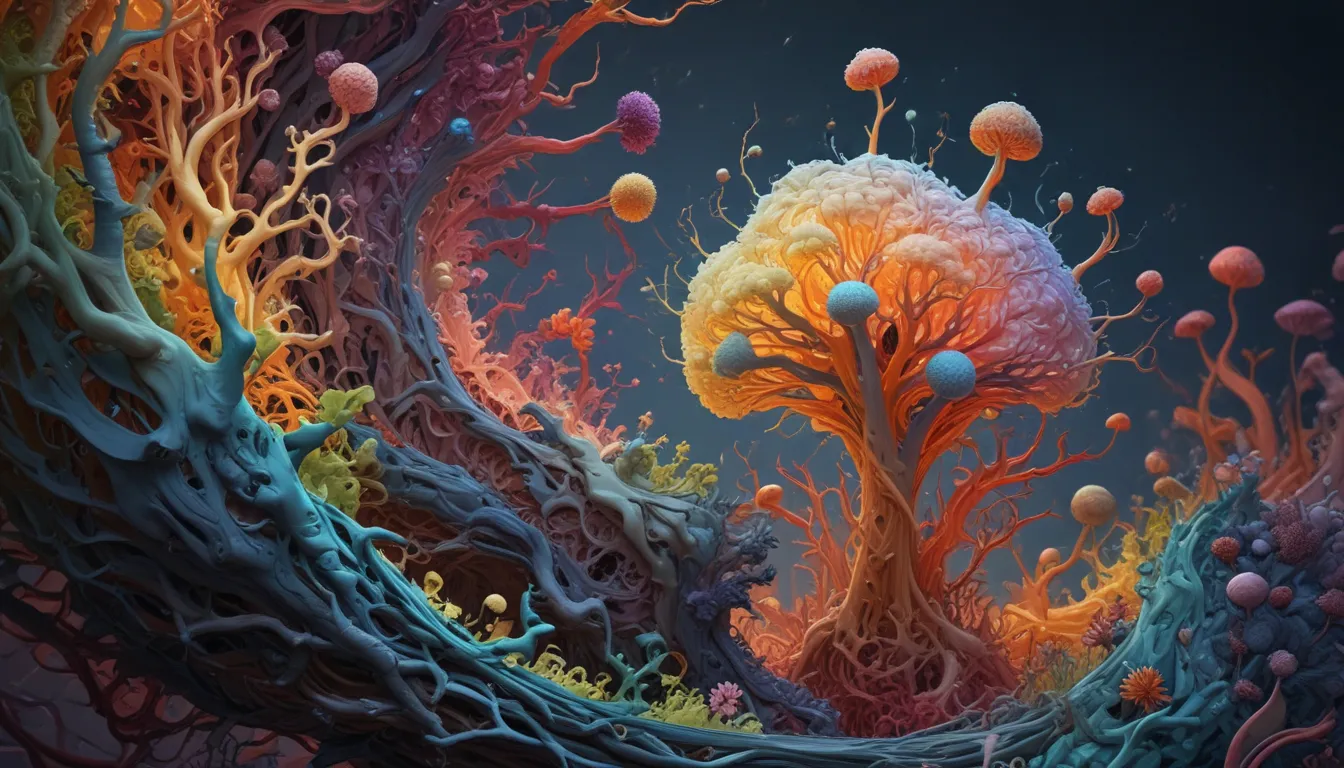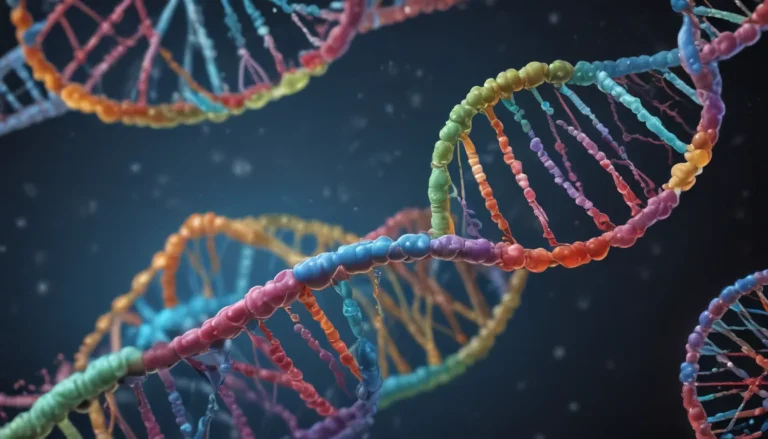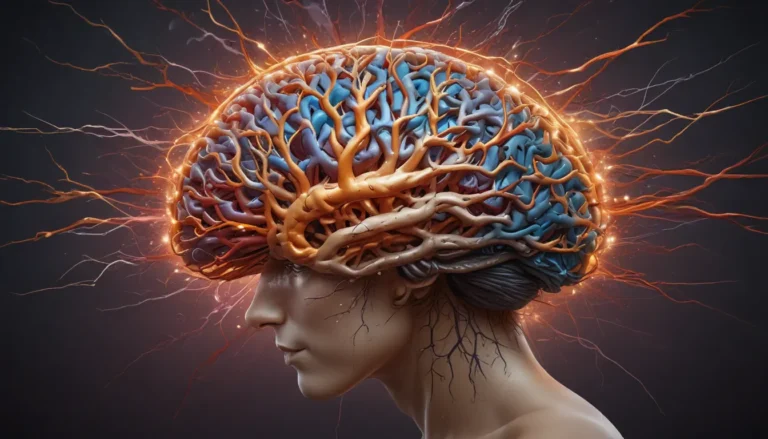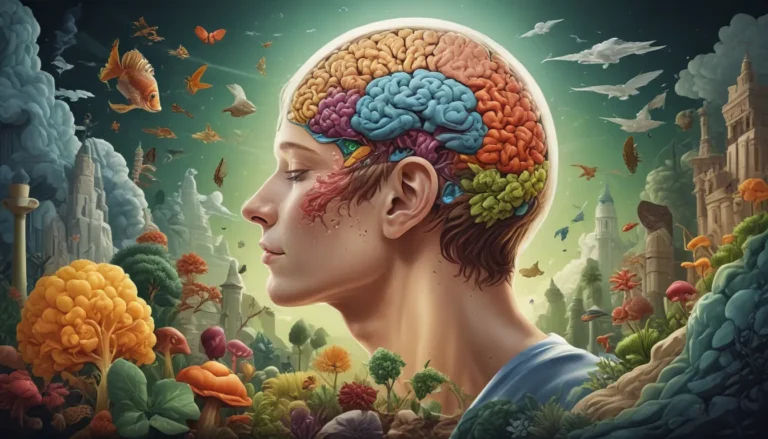A Note About Images: The images used in our articles are for illustration purposes only and may not exactly match the content. They are meant to engage readers, but the text should be relied upon for accurate information.
When we think of the wonders of biology, one process that never fails to captivate our imagination is morphogenesis. Derived from the Greek words “morphe,” meaning form, and “genesis,” meaning origin, morphogenesis refers to the biological process through which organisms develop their shape, structure, and patterns. Whether it’s the growth of a tiny seed into a towering tree or the intricate formation of complex organs in a developing embryo, morphogenesis is at the heart of life’s remarkable transformations.
In this article, we will delve deeper into the world of morphogenesis and uncover 17 intriguing facts about this captivating biological phenomenon. From the role of genetic instructions to the influence of external factors, we will explore the complex mechanisms that govern the development of living organisms. So, fasten your seatbelts as we embark on a journey to unravel the mysteries of morphogenesis.
Understanding the Essence of Morphogenesis
Morphogenesis shapes all living things, from cells to entire organisms, using genetic instructions and environmental cues. It is essential for growth, development, and even healing, making it a fascinating process to study. Scientists are still unraveling the mysteries of morphogenesis, hoping to apply its principles to regenerative medicine and tissue engineering. This ongoing exploration continues to amaze and inspire researchers worldwide.
Delving into the World of Morphogenesis
The Crucial Role of Morphogenesis in Biological Development
Morphogenesis is essential for the growth and development of all living organisms. From the formation of complex body structures in multicellular organisms to the regeneration of tissues and organs, morphogenesis plays a crucial role in shaping life.
The Multiscale Nature of Morphogenesis
Morphogenesis occurs at various scales, from the cellular level to the whole organism. At the cellular level, it involves processes like cell division, migration, and differentiation. At the organism level, it encompasses the development of organ systems and overall body shape.
The Influence of Genetic Factors and Environmental Cues
Morphogenesis is guided by a combination of genetic factors and environmental cues. Genes provide the basic instructions for development, but external factors such as nutrient availability, temperature, and physical forces also influence the morphogenetic process.
Unveiling the Mysteries of Morphogenesis
The study of morphogenesis helps us understand birth defects and diseases. By unraveling the intricate mechanisms of morphogenesis, scientists gain insights into the causes and potential treatments of congenital anomalies and diseases.
The Marvel of Self-Organization in Morphogenesis
Morphogenesis involves the formation of complex structures through self-organization. Cells and tissues can spontaneously arrange themselves into intricate patterns and structures without external instructions, driven by inherent physical and chemical processes.
The Importance of Cell Communication in Morphogenesis
Morphogenesis relies on precise cell communication and signaling pathways. Cells communicate through chemical signals, transmitting information that coordinates their behaviors and ensures proper tissue and organ formation.
The Role of Master Regulator Genes in Morphogenesis
Morphogenesis is regulated by genes known as “master regulators.” These genes control the expression of other genes involved in morphogenesis and can dictate the fate and behavior of cells during development.
The Impact of Mechanical Forces on Morphogenesis
Morphogenesis can be influenced by mechanical forces. Physical forces such as tension, compression, and shear stress can contribute to the shaping and remodeling of tissues during morphogenesis.
The Lifelong Journey of Morphogenesis
Morphogenesis is not limited to embryonic development. Organisms can exhibit morphogenesis throughout their lifespan, enabling processes like wound healing, tissue regeneration, and continuous growth.
The Diversity of Morphogenetic Strategies Across Species
Morphogenesis can vary between species. Different organisms employ unique morphogenetic strategies, leading to the wide diversity of forms and structures observed in the natural world.
The Impact of Environmental Factors on Morphogenesis
Morphogenesis can be influenced by environmental factors, such as light and temperature. Environmental conditions play a role in shaping the morphology of plants and animals, influencing traits like coloration, body size, and overall shape.
The Vulnerability of Morphogenesis to Disruptions
Morphogenesis can be disrupted by genetic mutations or external factors, leading to developmental abnormalities. Defects in the genes or environmental disturbances can result in malformations or dysfunctions during morphogenesis, giving rise to birth defects or diseases.
The Resilience and Adaptive Capacity of Morphogenesis
Morphogenesis can exhibit remarkable resilience and adaptability. Organisms can often recover and adapt to changes in their environment, allowing morphogenesis to continue even under challenging conditions.
The Tools and Techniques for Studying Morphogenesis
Researchers use various experimental approaches to study morphogenesis, including genetic manipulation, imaging, and computational simulations. These techniques help understand the underlying mechanisms of this intricate process.
The Practical Applications of Morphogenesis
Morphogenesis has practical applications in regenerative medicine and tissue engineering. By unraveling the principles of morphogenesis, scientists aim to develop innovative strategies to repair and regenerate damaged or diseased tissues.
The Continuity and Complexity of Morphogenesis
Morphogenesis is a dynamic and ongoing process. Throughout an organism’s life, morphogenesis continues to shape and remodel tissues, allowing for growth, adaptation, and repair.
The Unfinished Story of Morphogenesis
The intricate process of morphogenesis is still not fully understood. Despite significant scientific progress, there is much to discover about the complex interactions and mechanisms that drive morphogenesis in living organisms.
Concluding Thoughts
In conclusion, morphogenesis is a fascinating process that plays a crucial role in the development and growth of living organisms. By understanding the various factors and mechanisms involved in morphogenesis, scientists and researchers can gain valuable insight into embryonic development, tissue regeneration, and diseases related to abnormal morphogenesis.
Studying morphogenesis not only expands our knowledge of biology but also paves the way for potential applications in fields such as regenerative medicine and tissue engineering. It highlights the incredible complexity and beauty of life and reiterates the importance of continued exploration and research in this area.
Frequently Asked Questions
- What is morphogenesis?
Morphogenesis is the biological process by which an organism develops its shape and form. It involves the coordination of cellular activities, signaling pathways, and genetic factors.
- What are the key factors that influence morphogenesis?
Several factors contribute to morphogenesis, including genetic instructions, cellular communication, environmental cues, and mechanical forces. These elements work together to orchestrate the development and organization of tissues and organs.
- Can morphogenesis be controlled or manipulated?
Scientists have made significant progress in understanding the factors that govern morphogenesis. By manipulating these factors, it is possible to influence the development of specific tissues or organs. However, complete control over morphogenesis is still a complex and ongoing research endeavor.
- How does morphogenesis contribute to disease development?
Abnormalities in morphogenesis can lead to various congenital disorders and diseases. Disruptions in the signaling pathways or genetic mutations can result in malformations or improper tissue organization, leading to conditions such as cleft palate or heart defects.
- What are the future implications of studying morphogenesis?
Studying morphogenesis has far-reaching implications in various fields. It can potentially lead to advancements in regenerative medicine, tissue engineering, and understanding diseases linked to abnormal development. Additionally, insights gained from studying morphogenesis can spark innovations in biotechnology and biomedical research.
Morphogenesis is just one piece of the developmental biology puzzle. Gastrulation, another crucial process, shapes embryos in fascinating ways. Stem cells differentiate into specialized tissues, driving growth and repair. Precise pattern formation creates stunning designs in nature. Dive deeper into these captivating topics and uncover more mind-blowing facts about life’s intricate dance.
Our commitment to delivering trustworthy and engaging content is at the heart of what we do. Each fact on our site is contributed by real users like you, bringing a wealth of diverse insights and information. To ensure the highest standards of accuracy and reliability, our dedicated editors meticulously review each submission. Trust in our commitment to quality and authenticity as you explore and learn with us.






